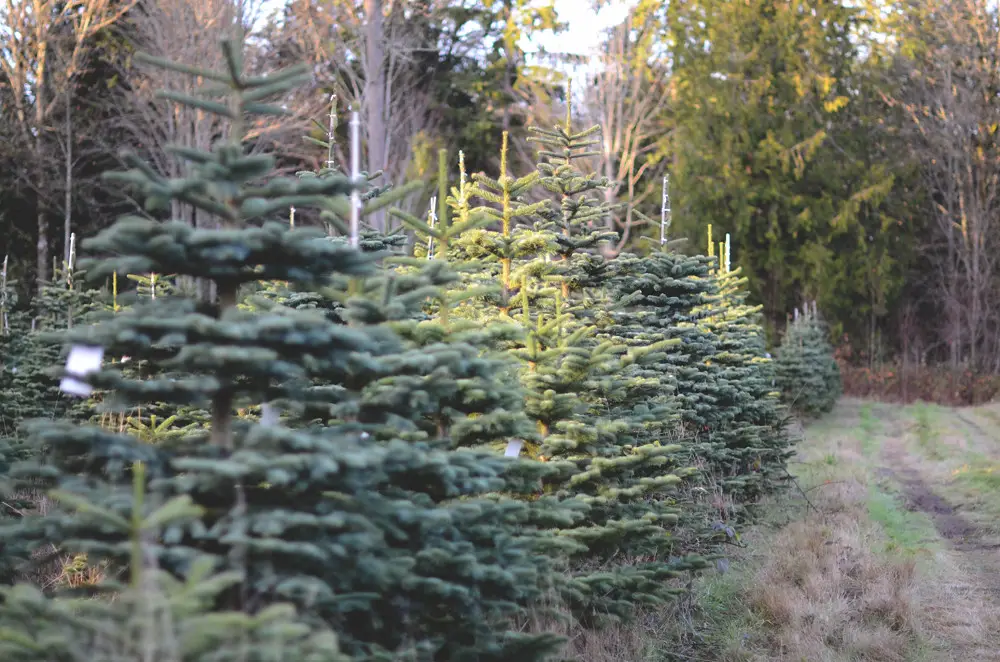The Christmas tree, a symbol of the holiday season in many cultures, is more than just a festive decoration. It has a rich history and significance that goes beyond its bright lights and shiny ornaments. Whether real or artificial, the Christmas tree is often the centerpiece of holiday celebrations, and its adornment is a cherished tradition for many families.
The real Christmas trees that we decorate are usually evergreen conifers such as spruce, pine, or fir. Their evergreen nature symbolizes everlasting life, a theme that resonates during the Christmas season. Growing and caring for these trees is an agricultural industry that provides jobs, promotes sustainability, and conserves green spaces.
The popularity of the Christmas tree as a holiday tradition has led to careful cultivation and management of these trees in farms across North America, Europe, and other parts of the world. Understanding the horticultural needs and characteristics of these trees can help both growers and consumers ensure that they remain vibrant and healthy throughout the holiday season.
| Attribute | Details |
|---|---|
| Common Names | Christmas Tree |
| Botanical Name | Picea, Abies, Pinus spp. |
| Family | Pinaceae |
| Plant Type | Evergreen Conifer |
| Mature Size | 40-100 feet (depends on species) |
| Sun Exposure | Full Sun |
| Soil Type | Well-drained, Slightly Acidic |
| Hardiness Zones | 3-9 (varies by species) |
| Native Area | Northern Hemisphere |
Christmas Tree Care
Caring for a Christmas tree begins at the farm, where growers must consider the species, soil, watering, and pruning needs. For consumers who purchase a real Christmas tree, the primary care concerns are proper watering and placement away from heat sources.
The cut base of the tree should be kept in water at all times to prevent the needles from drying out. Checking the water daily and using a stand that holds at least one gallon of water helps keep the tree fresh throughout the season.
Light Requirement for Christmas Tree
Christmas trees, being conifers, require full sun to grow properly. While they can tolerate some shade, too much shade can cause sparse growth and poor form. Growers must consider this when planting, while consumers need not worry about light once the tree is cut and indoors.
Soil Requirements for Christmas Tree
Christmas trees prefer well-drained soil that’s slightly acidic. Clay or heavy soils can be amended with organic matter to provide proper drainage. Regular soil testing can help farmers maintain optimal pH and nutrient levels for healthy growth.
Water Requirements for Christmas Tree
While the Christmas tree requires consistent moisture during its growth, it’s tolerant of some drought once established. On the farm, irrigation may be necessary during dry periods. For consumers, it is crucial to keep the cut base of the tree submerged in water.
Temperature and Humidity
Christmas trees are adapted to cooler climates, reflecting their native ranges in the Northern Hemisphere. They can withstand winter temperatures, but growers must select species suitable for their hardiness zone. Indoor heating can dry out a cut tree, so regular watering is vital.
Fertilizer
Christmas tree farmers often use fertilizer to promote growth and improve needle color. A soil test will guide the application of balanced fertilizers, generally applied in the spring.
Pruning Christmas Tree
Pruning, or shearing, shapes the Christmas tree and encourages dense growth. This is typically done annually by growers to achieve the desired pyramid shape.
Propagating Christmas Tree
Christmas trees are propagated through seeds or cuttings, depending on the species. Seeds are sown in nurseries, and the seedlings are transplanted to the field. Some species may also be grown from branch cuttings.
How To Grow Christmas Tree From Seed
Growing a Christmas tree from seed requires patience, as it can take several years to reach a marketable size. Seeds are sown in well-drained soil, usually in a nursery setting, and cared for until they are large enough to transplant.
Common Pests & Plant Diseases
Aphids
These can be controlled with insecticides or natural predators.
Fungal Diseases
Proper spacing and pruning can reduce the risk of fungal infections.
Common Problems With Christmas Tree
Needle Drop
This is often a result of insufficient watering of a cut tree.
Poor Shape or Growth
This can result from inadequate sunlight, water, or nutrients during growth.
Pro Tips
- Choose a species suitable for your climate if growing a Christmas tree.
- Keep a cut Christmas tree well-watered to preserve freshness.
- Select a tree with healthy green needles, as brown or dry needles may indicate a lack of freshness.
- Recycle your Christmas tree after the holidays. Many communities offer recycling programs.




